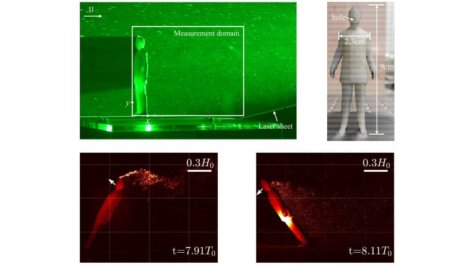WASHINGTON — Feel a cough coming on? Look down, fast! Researchers say the best way to keep virus particles from spreading indoors this winter is to point our heads down when we feel the need to cough.
As more people head indoors during the winter months, how the public keeps COVID-19 droplets from spreading in tight, enclosed environments becomes vitally important. Previous studies show that coughs and sneezes spread viral aerosols up to six feet away — and possibly even farther.
To see how human behavior can either help or hurt this flow, a team from the Chinese Academy of Sciences modeled how respiratory droplets react when people go up or walk down a flight of stairs.
“Two different patterns of droplets dispersion are observed due to the different wake flows,” reports researcher Hongping Wang in a media release. “These results suggest that we should cough with the head down toward the ground to ensure that most of the droplets enter the wake region.”

Coughing downward even more important while walking downstairs

Study authors used mannequins expelling white resin to simulate coughs from people on stairs. They also positioned the mannequins to lean forward, in the way many people do while walking upstairs, and lean back like many do while walking down.
In a water tunnel, results revealed a wake forming around the bodies while they were in motion. This wake was able to sweep up coughing particles falling towards the ground. However, particles above the head were able to spread out over a relatively large area — as if the particles were coming from the very top of the person’s head.
For mannequins simulating people walking up the stairs, most of the particles stayed below the shoulder, moving downward over a short distance. For the mannequins simulating people walking down the stairs, more particles moved above the head and were able to travel farther through the air.
“The major challenge is how to use particles in water to simulate the droplets in the air,” Wang says. “The most surprising part was that the particles higher than the head can travel a much longer distance than those particles lower than the head due to the induction of the wake flow.”
The study is published in the journal AIP Advances.
